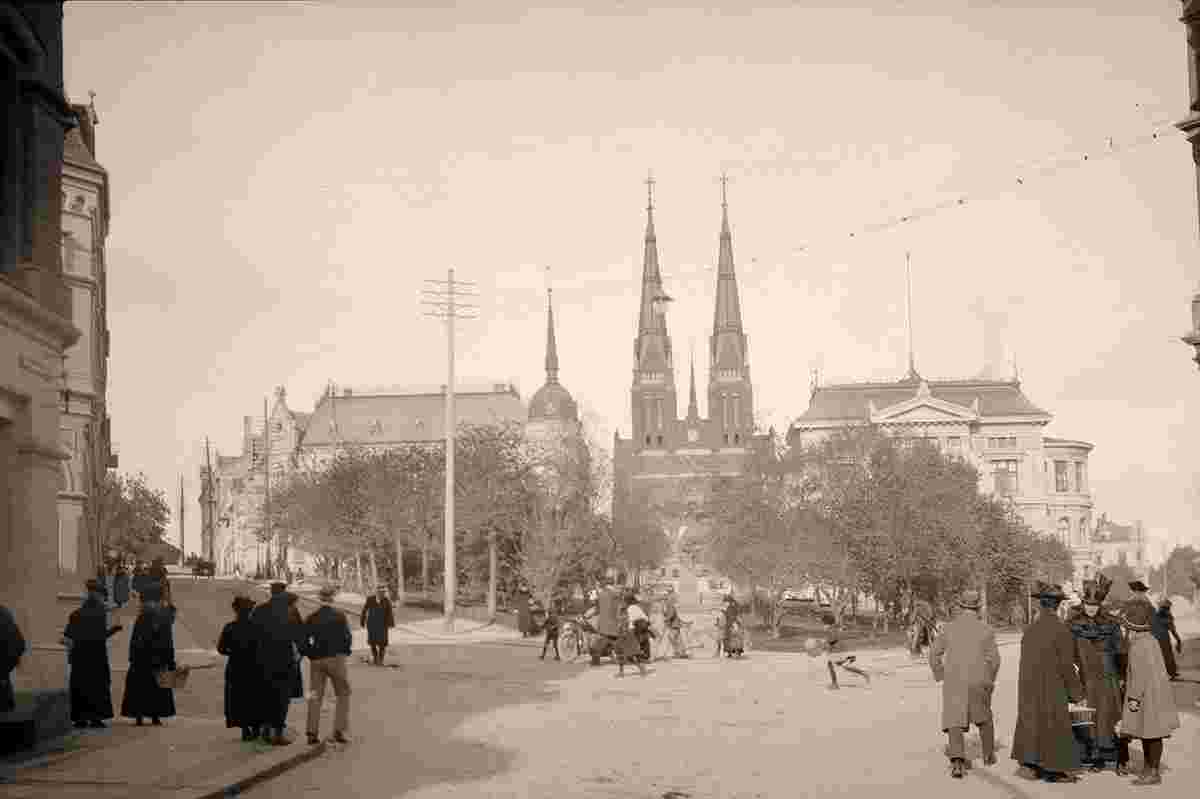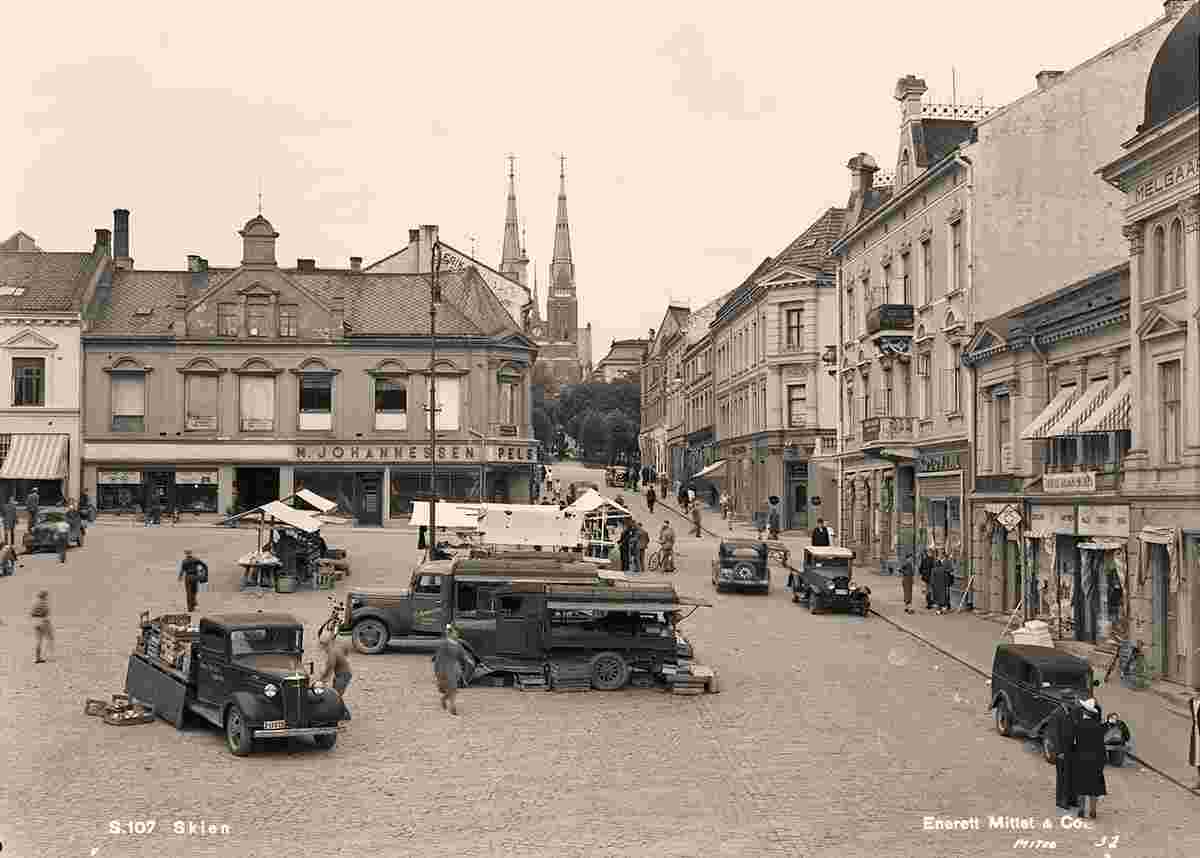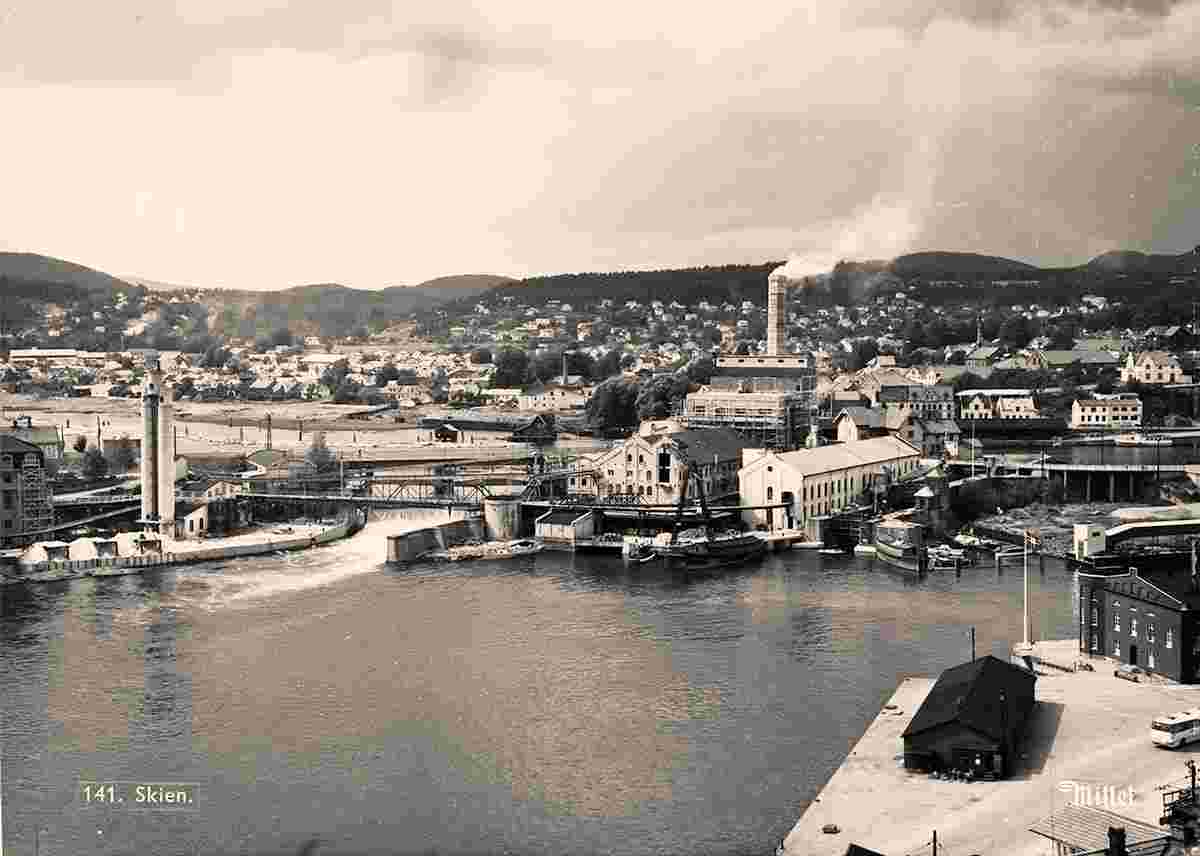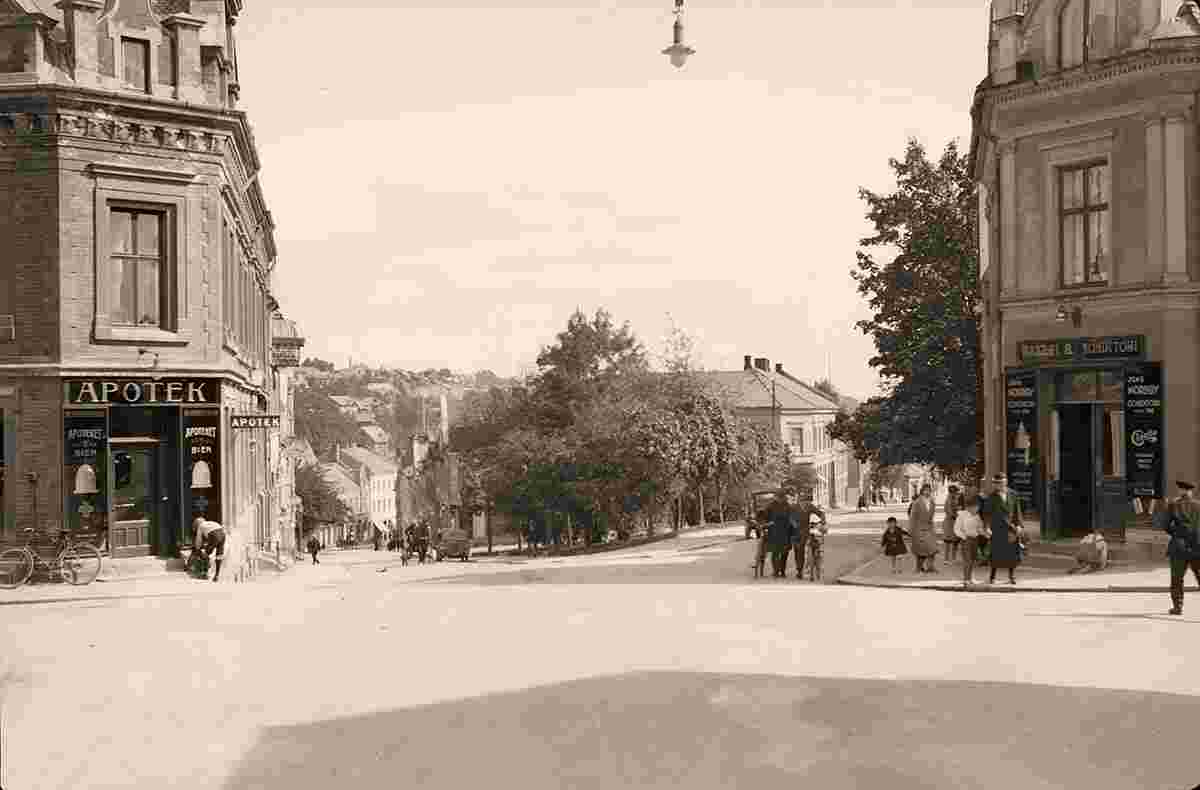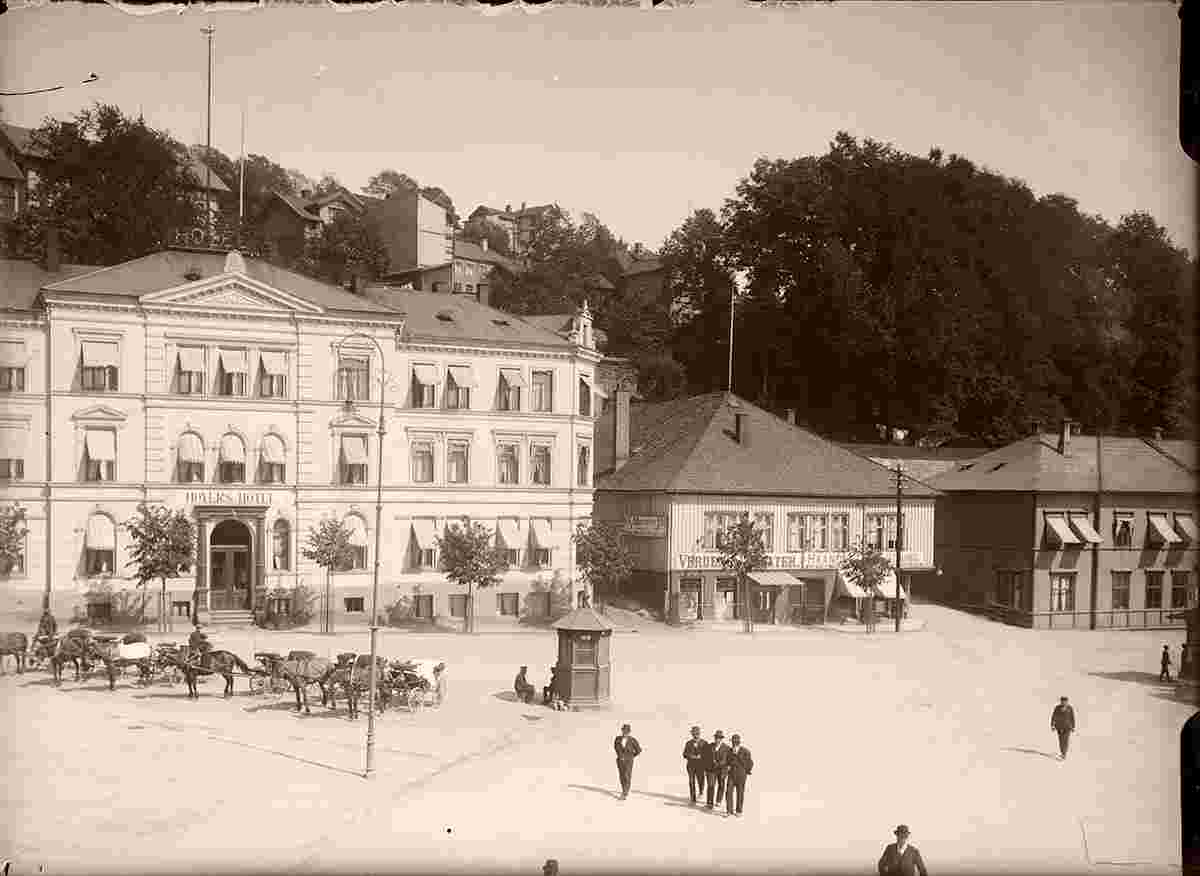Historical and old photos of Skien, Vestfold and Telemark
HistoryUntil 1979, it was thought that Skien was founded in the 14th century. However, the archaeological discovery of a carving of the Skien animal has established that its founding preceded 1000 A.D. The city was then a meeting place for inland farmers and marine traders, and also a centre for trading whetstones from Eidsborg (inland Telemark). Gimsøy Abbey was founded in the 12th century. Skien was given formal commercial town rights by the Norwegian crown in 1358. Timber has historically been the principal export from Skien, and in the sixteenth century the city became the Kingdom's leading port for shipping timber. The oldest remaining building is Gjerpen church (built in approximately 1150). From the 16th century, the city came to be dominated by a group of families known as patricians. In an 1882 letter to Georg Brandes, Henrik Ibsen mentions the families Paus, Plesner, von der Lippe, Cappelen and Blom as the most prominent patrician families when he grew up there. The current town layout was fixed after the last town fire in 1886. In 1964, the rural municipalities Solum and Gjerpen were merged with Skien town, forming the Skien municipality. Frogner ManorFrogner Manor (Frogner Hovedgård) is a manor house on the outskirts of Skien. The manor house was built for shipowner and timber merchant Christopher Hansen Blom (died 1879) and his wife Marie Elisabeth (Cappelen) Blom (died 1834). The main building is influenced by Italian Renaissance architecture. The garden was laid out in English landscape style in the 1850s. KapitelbergetThe Church on Kapitelberget (Kirken på Kapitelberget) was a medieval church. Kapitelberget was a private chapel on Bratsberg farm dating to the early 1100s. It is not known when the church went out of use, but Bratsberg farm burned down in 1156. in 1576, Peder Claussøn Friis reviewed it as a ruin. The site was first excavated in 1901. In 1928, Gerhard Fischer undertook restoration and preservation. The work was completed in 1933. Origin: en.wikipedia.org | ||||||||||||
 |
Historical and old photos of Skien, Vestfold and Telemark
Historiske og gamle bilder av Skien, Vestfold og Telemark |
| Main page • Countries of Europa • Cities of Norway |
| Robinson Rd, CB 13862 Nassau, NP, The Bahamas |

